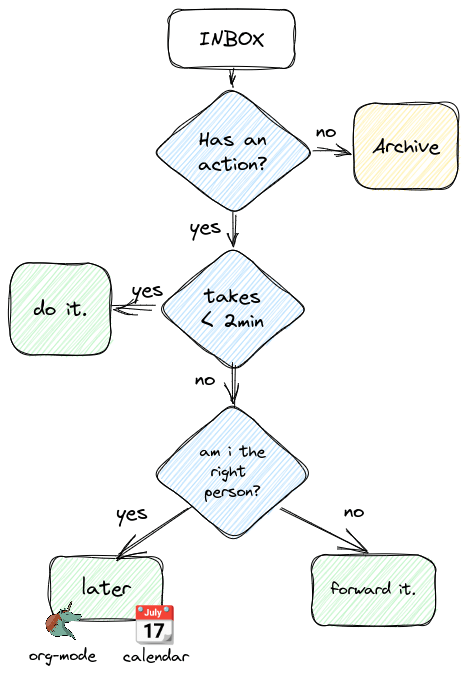I have never seen an email message too short.
– Roman and Raphaelson, Writing That Works
Email is both a cornerstone of remote-first culture and a colossal waste of time.
This is because folks think of email as mail—like they’re writing a letter. But it’s more like popping into my office.
You’d never stop me in the hall and go: “Hey, about Project X—I hope this day finds you well and you’re staying healthy. As you may know, for the past six months, I have been working on Project X…”.
All that throat-clearing would be so awkward. You’d go: “Hey, Project X is done! Do you want to try it?”
But it’s hard to pare down your email to its essence. Here are some tips that may help.
💌 Clear, short, and simple
If you want to communicate: write like you talk.
Avoid the big words—instead of “utilize,” try “use.” Cut lengthy asides and empty jargon—they make it harder to understand what you’re saying.
In his essay “Politics and the English Language,” George Orwell condemned modern business jargon as “gumming together long strips of words […] by sheer humbug.” An all-too-apt description of emails post-ChatGPT.
Consider Orwell’s rewrite of this passage from Ecclesiastes:
The race is not to the swift, nor the battle to the strong […]; but time and chance happeneth to them all.
Which, in modern businessese, becomes:
Objective consideration of contemporary phenomena compels the conclusion that success or failure in competitive activities exhibits no tendency to be commensurate with innate capacity, but that a considerable element of the unpredictable must invariably be taken into account.
⏳ Embrace the inverted pyramid
Get to the point.
Journalists crank out stories using a method called the “inverted pyramid.” The pyramid’s base—the most essential information—comes first.
This structure lets readers bail early and still get the gist of the story.
That’s perfect for email. People are busy; get to your point as soon as possible.
🏥 Use the subject line
When I’m at my best, I use David Allen’s Getting Things Done (GTD) method to process my inbox:

I use the subject line to triage.
Allen’s method focuses on the next action. So, if you need action from me, try tagging it in the subject line:
- [ACTION] – you need me to do something
- [Low Priority] – no need for immediate action.
- [Info] – no action required; information only.
Include the deadline in the subject; e.g., “[ACTION] Review blog post by Tue, 13 Jun 2023”
👉 tl;dr: bullet points
tl;dr: “too-long; didn’t read”-style summaries at the top emails save time and mental energy—highly recommended.
And instead of long paragraphs and walls of text:
- Use bullet points.
- They’re swell.